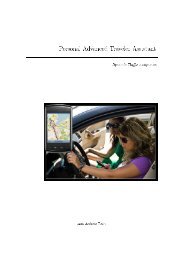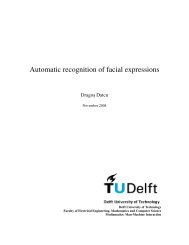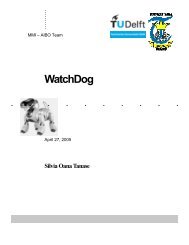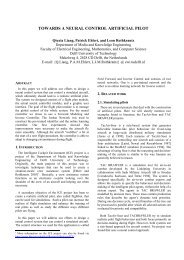Abstract - Knowledge Based Systems Group - TU Delft
Abstract - Knowledge Based Systems Group - TU Delft
Abstract - Knowledge Based Systems Group - TU Delft
You also want an ePaper? Increase the reach of your titles
YUMPU automatically turns print PDFs into web optimized ePapers that Google loves.
I N T ERN SH I P T U D EL FT – SERI O U S GA M I N G RO T T ERD A M U N I V ERSI T Y / C M I<br />
D I GI T A L U N I V ERSI T Y PA GE 2 5 1 2 - 0 1 - 2 0 0 8<br />
icon with the orange/yellow dots. When u clicked these icons, a menu will<br />
show up with 4 fields.<br />
These fields are Fields and Detection, Particles, Soft Body and Fluid<br />
simulation. To enable Fluid Simulation press the Enable button in the Fluid<br />
Simulation field.<br />
If the Enable button is pressed a menu will appear. This menu contains 6<br />
buttons: Domain, Fluid, Obstacle, Inflow, Outflow and Particle.<br />
Figure 2.6.1.3 Fluid simulation<br />
To create a Fluid Simulation there have to be at least two objects. One<br />
object is the Domain which normally is a cube. The Domain is the space<br />
where the fluid simulation is performed. All fluid objects outside of it are<br />
ignored, and the fluid can not flow out of the domain.<br />
The second object is the fluid. The Fluid object is always placed within the<br />
domain. When this scene is simulated the Fluid will release within the<br />
domain and act like a real fluid would.<br />
Figure 2.6.1.4 Fluid simulation - animated<br />
SVEN ANKER - 0773594<br />
ROB VAN DER KAMP - 0772800
















